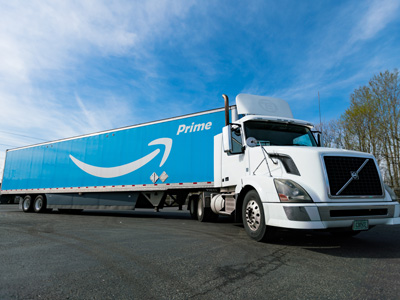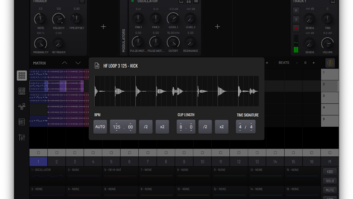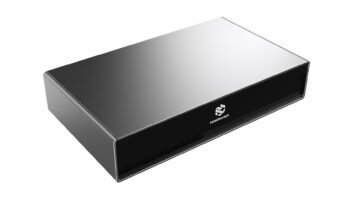
Amazon Prime Day 2022 broke records, as consumers purchased more than 300 million items and drove nearly $12 billion in sales.
Prime Day has become the most anticipated shopping event of the year and has overtaken Labor Day as the main late summer retail holiday. However, it doesn’t just generate massive sales for Amazon, it also can pay dividends for retailers and marketers who smartly piggyback on the event to drive their own sales.
Over the years, we’ve seen many retailers offer counter-programming to Amazon, like Walmart’s Deals for Days and Target’s Deal Days. In 2022, 105 merchants participated in Prime season-specific discounts and promotions across Ziff Davis Shopping brands (which includes BlackFriday.com).
Now is the prime time for retailers to begin preparing for Prime Day 2023, which takes place July 11-12. Prime Day also coincides with the unofficial kickoff of the back-to-school shopping season, so consumers already are more inclined to make purchases compared to other times of the year. Marketing to these shoppers during Prime season could yield an even greater return on retailers’ marketing investment.
Ziff Davis Shopping surveyed 1,000 adult shoppers to uncover Prime Day trends and insights that retailers and marketers can leverage to boost their own sales. Here’s why midsummer is a “prime” moment to put deals in front of shoppers and how to successfully capitalize on Prime Day to attract and convert new customers.
The Prime Day Opportunity
To make the most of Prime Day, it’s crucial to understand just how large this shopping event is, the most popular Prime Day retail categories among shoppers, and how the Prime Day audience may overlap with the segments you want to target.

First, 75% of households have an Amazon Prime membership. Most of these households — 81% — also use deal sites, indicating these shoppers prioritize both convenience and price. The group of shoppers Ziff Davis Shopping surveyed closely mimicked these patterns, as 76% of them live in a Prime household.
Prime Day has become ubiquitous, and 96% of the shoppers we surveyed plan to make a purchase. A small percentage will browse and only buy if they spot a can’t-miss deal.
Electronics (59%) and clothing, shoes and apparel (49%) are the most popular categories among consumers by a wide margin, followed by beauty and skincare and the bedding, linens and towels category (24%, respectively).
Consumers plan to divide their loyalties almost evenly between Amazon and other retailers on Prime Day. They’ll spend an average of $250, $150 of which will go to Amazon and the remaining $100 of which they’ll spend with other retailers.
Given these figures, it’s clear retailers who strategize effectively and have the right game plan can capture some of these Prime Day dollars, along with back-to-school shoppers who are ready to buy.
5 Ways to Boost Mid-Summer Sales During “Prime” Season
Up your content game
Optimize promotional levers that engage deal-minded and savvy shoppers during Prime Day. Rich editorial deal content and immersive product content is the best way to drive more engagement.
On your direct-to-consumer site or marketplace channels outside of Amazon, think about 360-degree videos and high-quality images that showcase your products. Offer flash sales on social media and create optimized product pages with search-friendly terms and compelling details. Produce sponsored blogs that round up the best deals across your inventory or even advertise your deals on a third-party site. BlackFriday.com, for example, publishes approximately 242 ads for shopping moments throughout the year (including 29 during the Prime Day period) and surfaces Prime Day best deals content as well as ads for counter sales from competitors.
Start early
Prime season only may be two days, but your campaigns should start well before then and run for weeks — right up to and during Prime Day on July 11th and 12th.
Focus on reaching consumers before this shopping event with targeted ads across search, social, the web and mobile. Amazon often reduces prices on its own branded merchandise right before Prime Day, so offering your own discount and back-to-school- deals during the pre-sale period can help you stay competitive and capture shoppers who are already on the hunt for good buys.
 Don’t forget about brick-and-mortar
Don’t forget about brick-and-mortar
Amazon might have an advantage when it comes to its fulfillment experience because of its same-day and one-day delivery options. But many retailers have an upper hand that the online behemoth doesn’t have: a physical storefront.
Offer buy online, same-day pick-up in-store options to capitalize on your brick-and-mortar advantage. On Prime Day 2022, brick-and-mortar retailers experienced a 20% increase in conversions compared to the same period the year before, so this online shopping event also can influence offline sales.
Optimize your mobile experience
Much of the action on Prime Day will take place on mobile, so delivering an engaging mobile experience may help you win new customers and compel existing ones to make a purchase.
Many consumers use mobile to pre-shop and educate themselves before they make a purchase. Deliver an optimized experience on both your app and the mobile web and produce dynamic creative ads to give consumers all the information they need to make an informed buying decision. You also should tailor mobile content to each stage of the customer journey, so use any customer data at your disposal to deliver the most relevant, impactful messaging as customers move through the funnel or app lifecycle.
Continually engage shoppers
There’s a sales long tail with Prime Day, meaning consumers are still open to making a purchase even after this shopping event ends.
Just as you should start early with Prime Day deals, it also pays to keep the discounts and promotional offers rolling immediately after this event. Use the subsequent one to two week-period after Prime Day to continuously market to shoppers, especially since back-to-school season will be in full swing. You may need to adjust your campaign messaging or even the discounted inventory you offer to better align with what shoppers are looking for post-Prime day, but the extra effort could pay off in incremental sales.
Getting the Most out of Prime Day
Prime Day doesn’t just provide a sales boost for Amazon, it can yield great results for your brand, too. Last year, online retailers experienced a 141% sales bump compared to the year before because of this shopping event, so there’s potential for Prime Day 2023 to deliver similar results.
Smart retailers who employ a range of counter sales strategies — from same-day pick-up in-store options to pre and post-Prime Day discounts — will be well positioned to make mid-summer a prime time for boosting revenue.
About the Author
Julia O’Connell is the Director of Merchandising at Ziff Davis Shopping where she oversees the company’s merchandising operations and leads cross-functional product, email & affiliate marketing campaigns. Julia brings 20 years of experience in eCommerce driving revenue growth across Ziff Davis Shopping’s brand portfolio. She graduated from Texas State University with a Bachelor of Fine Art in design and visual arts.
See also: Executive Insight: Selling Audio Solutions? Sell the Experience













